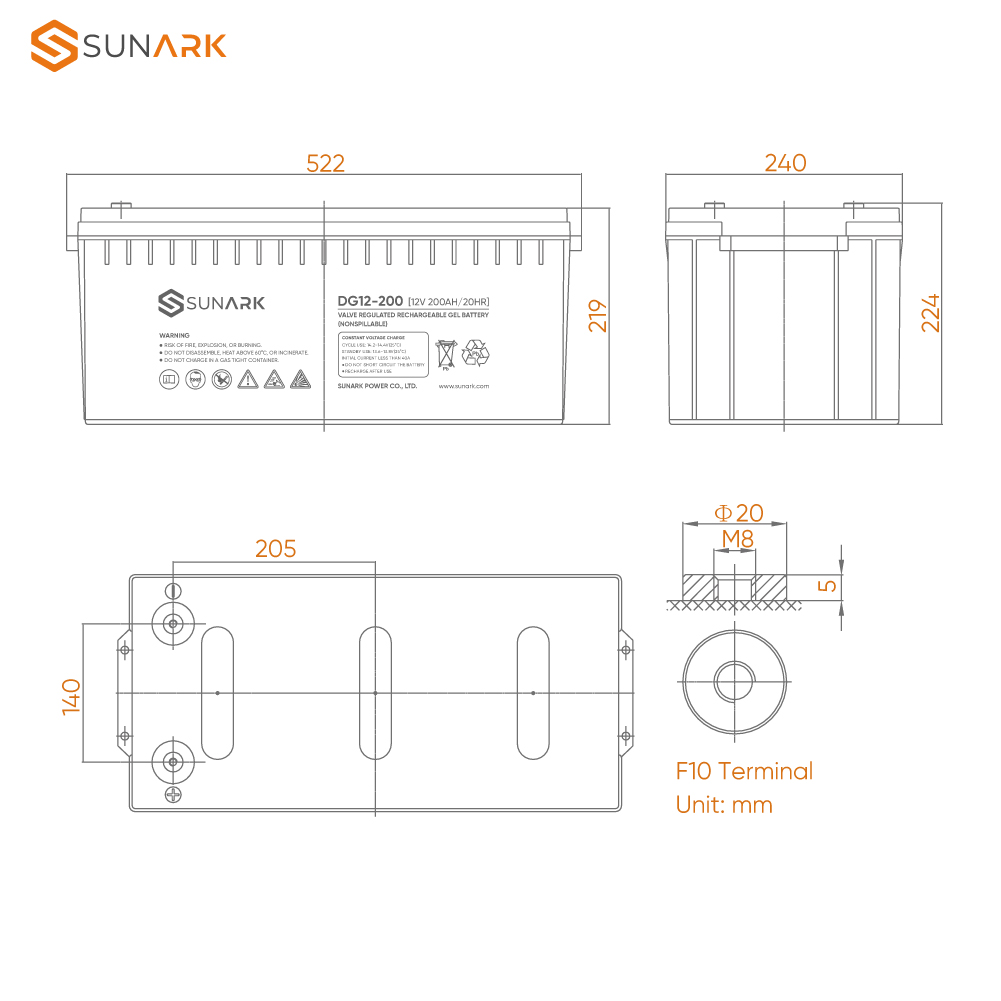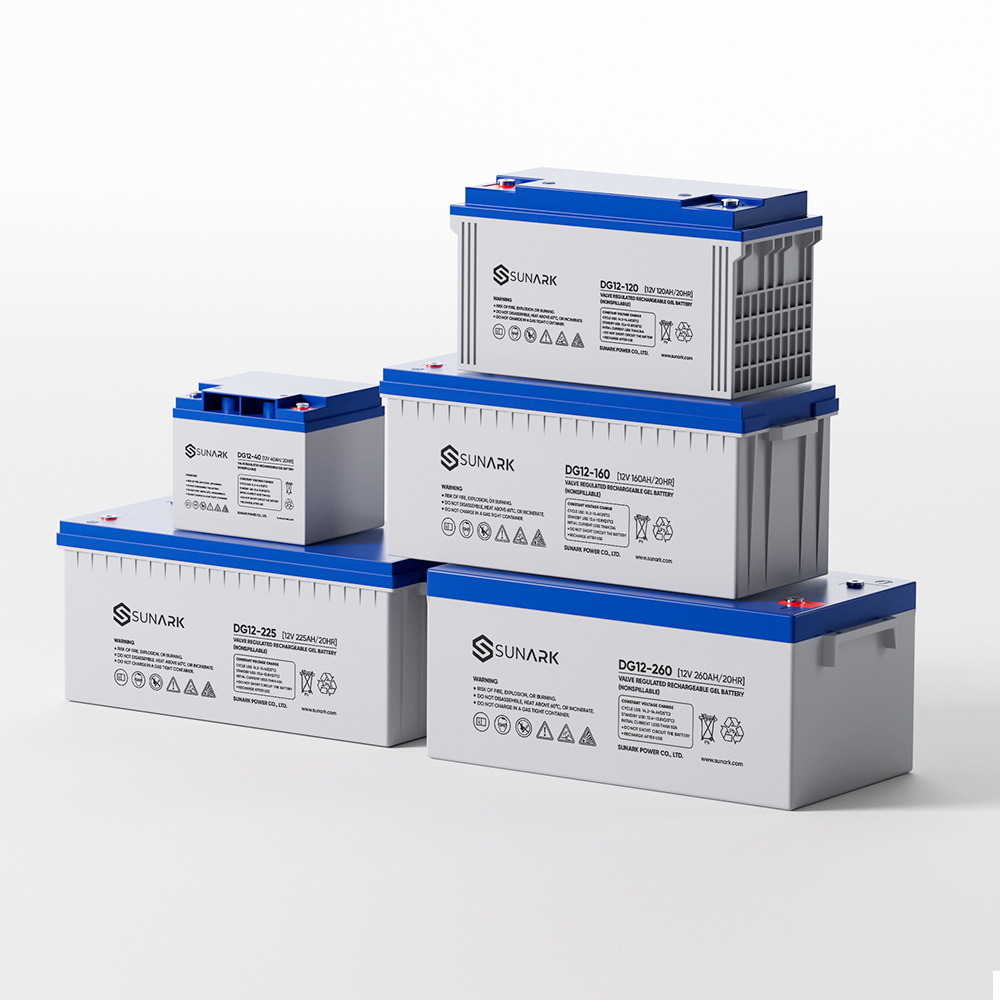Brand:
SunArkCells Per Unit:
6Voltage Per Unit:
12VDesign Life:
20 years (Float charging)Standby Use Voltage:
13.6V~13.8V @25°CCycle Use Voltage:
14.2V~14.4V @25°COperating Temperature Range:
Discharge: -15°C~50°C Charge: 0°C~40°C Storage: -15°C~50°CNormal Operating Temperature Range:
25°C ± 5°CSelf Discharge:
Monthly Self-discharge ratio is less than 3.5% at 25°C.Container Material:
A.B.S. UL94-HB UL94-V0 Optional
12V 200AH GEL Battery

What Is Deep Cycle Battery ?
Deep cycle batteries are designed to provide a steady output of electrical energy over charge and discharge cycles and have the following characteristics:
Cycle Life: It has a long cycle life and can withstand multiple deep discharge and charge cycles. Deep cycle batteries are usually designed with heavy lead and electrolyte to provide more energy storage and better cycle stability.
Deep Discharge Capability: The ability to be discharged to a relatively low charge level per cycle. Relative to a starter battery, a deep cycle battery can be discharged more deeply without a serious impact on battery life.
Low Self-Discharge Rate: A relatively low self-discharge rate allows deep-cycle batteries to maintain high charge levels during long-term storage or idle periods. This means that even when the battery is not being used, it is able to maintain some electrical energy storage.

10 Hour Rate Battery:
10-Hour Rate is a standard used to evaluate battery capacity. It indicates the continuous discharge current that the battery can provide within 10 hours, usually expressed in ampere (A).
For example, if a battery has a 10-hour rate of 100Ah, it means that the battery can supply 100 amps when discharged continuously for 10 hours. According to this standard, the current output at other discharge times can be deduced.
The 10-hour rate is a common standard used to compare the capacities of different batteries. Usually, the actual capacity of a battery is affected by temperature, discharge rate and other conditions, so the exact capacity may vary in actual use.
In addition to the 10-hour rate, there are other evaluation standards under discharge time, such as 20-hour rate, 5-hour rate, etc., which can be used to more accurately evaluate the battery capacity under different conditions. Selecting a discharge time rate that suits the needs of a particular application can help determine the correct size and capacity of the battery.